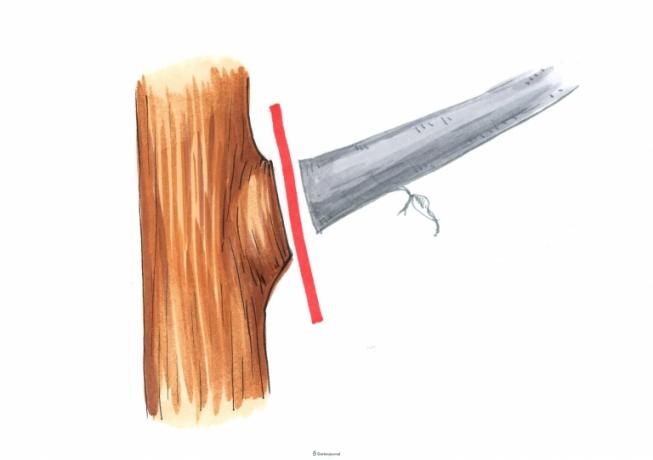What is an astring?
At the transition from the trunk to the branch there is a bulging thickening, which in technical jargon as Astring referred to as. There is a high concentration of divisible in this bead Cambium, which plays a central role in wound healing. Furthermore, the task of the astring is to provide the necessary stabilization at this statically heavily loaded point.
also read
- Cut the tree trunk into slices - that's how it works
- Growing new shoots on the yucca palm - this is how it works
- Cut hanging willow vigorously once a year - this is how it works
Cut on astring - how to do it right
Its important functions for stability, growth and wound healing leave no doubt that any damage to the astring can have fatal consequences for the affected tree or shrub. For this reason, many cutting instructions contain the advice to cut each thick branch specifically for Astring. How to proceed professionally:
- Blade or Saw blade sharpen and disinfect
- Apply from above just before the astring and saw off the branch in one go
- Smooth the edges of the wound with a knife or a hip
Gardeners sometimes cut too far away from the bulge for fear of damaging the astring. What remains is a short or long stump, which dries up and rots in the following time. This creates a dangerous source of infection for diseases and pests. The illustration below shows how to do it right.

Apply the saw a short distance from the astring. The astring itself must not be damaged under any circumstances.
Cut thick branches in stages on astring - this is how it works
Heavy or particularly thick branches can break off in one go and cause serious damage to the tree. You can avoid this disaster by cutting in several stages and on Astring. This is how it works step by step:
- Place the saw on the underside two hand widths from the astring
- Stabilize the branch with the other (gloved) hand
- Saw from below to the middle of the shoot
- Now place the saw 10 centimeters to the right or left on the top
- Saw until the branch breaks smoothly
In the third step, you dedicate yourself to the remaining stub. Cut this off on astring and smooth the edges of the wound with a knife or a hip.

Branches the size of an arm are removed in three stages. First, saw from below two hand's widths from the astring. Then move the saw to one side and saw from above until the branch breaks. Finally, cleanly cut off the small stump on the Astring.
What to do if no astring can be seen
If you cannot see a bead as an astring, the saw will cut parallel to the trunk. Place the saw blade just in front of the bark strip and saw the branch downwards. A slight incline allows rainwater to run off faster. The trunk wood must not be affected when cutting. Finally, smooth the edges of the wound with a sharp knife to optimize wound healing.
Youtube
Tips
A particularly thick astring is an alarm signal. If a bulge protrudes in the transition from the branch to the trunk in an unusual thickness, it is a so-called "farewell collar". The branch in question is no longer adequately supplied or has already died, so that there is a risk of breakage. This source of danger should be removed with a cut on astring.

